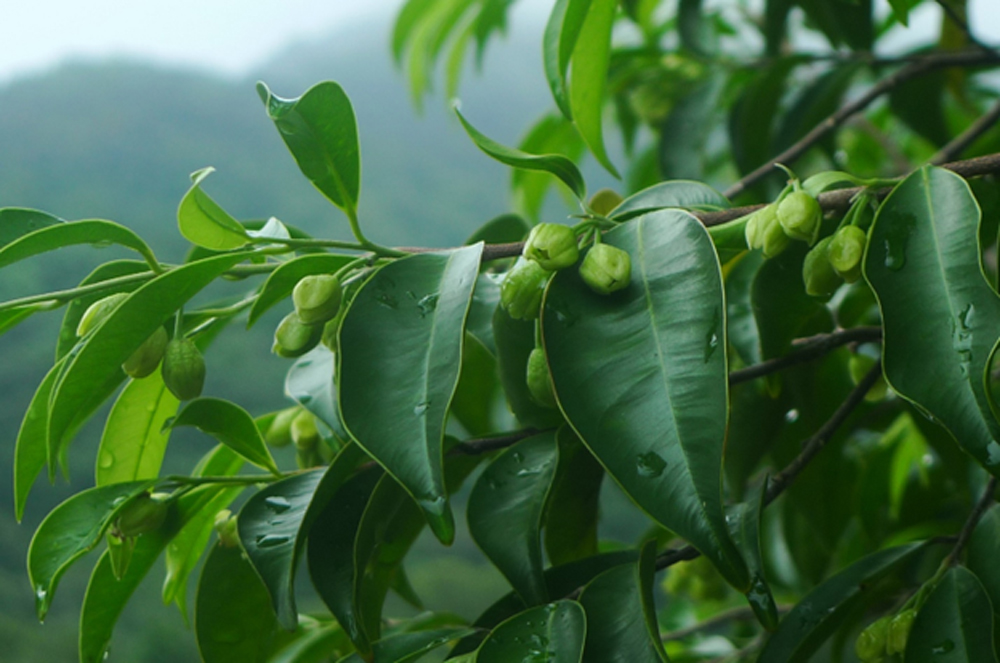Conserving remaining young trees should be prioritised to facilitate the recovery of Hong Kong’s Incense tree from poaching

A young Incense tree planted at KFBG starts to flower and fruit
Photo credit: KFBG, High-resolution images, please download from: https://bit.ly/4am7iWv
A collaborative study led by Kadoorie Farm and Botanic Garden (KFBG) has proposed a conservation strategy to save Hong Kong’s Incense tree (Aquilaria sinensis), an iconic local tree species that is threatened by poaching. The research, also involving researchers from the University of Hong Kong (HKU) and Missouri Botanical Garden, was recently published in the journal Global Ecology and Conservation.
Conserving remaining young trees should be prioritised to facilitate the recovery of Hong Kong’s Incense tree from poaching
Poaching is a major threat to these trees in Hong Kong, and KFBG is working with the authorities, academics and other conservation organisations to help protect this endangered species.
“KFBG is concerned about the decline of this species in Hong Kong, and we are combining different approaches, including scientific research, ecological restoration and public education to help conserve this precious tree,” says Dr Stephan Gale, Head of KFBG’s Flora Conservation Department and a co-author of the study.
KFBG has been researching the ecology and genetic diversity of the Incense tree in a joint project with HKU since 2017. As a large number of the trees have been cut down in Hong Kong in recent years for the valuable agarwood they contain, understanding the genetic diversity – and thus the species’ evolutionary potential – of the remaining trees becomes critical for the conservation of this species.
Edwin Kwok, a KFBG-funded PhD student, surveyed over 1,000 trees in Hong Kong to produce a unique genetic fingerprint for every single plant.
“When I survey Incense trees in Hong Kong's country parks and fung shui woods, most of the remaining trees I find are young seedlings. I was wondering if these young trees contain similar genetic diversity as the larger, mature trees. For the first time, our data reveals that they do,” said Edwin, the study’s first author.
“We have developed a genetic database for both large and young trees of this species in Hong Kong. We hope this database can provide useful information for conservation and law enforcement,” says Dr Feng Yang, a conservation geneticist at KFBG and another co-author of the study.
As many large trees have been cut down, the remaining younger trees become all the more important in ensuring that the species remains resilient in the face of both ongoing attack by poachers and other increasingly frequent natural threats, such as outbreaks of pests and diseases, as well as climate change.
“We studied young trees that were planted at KFBG for ecological restoration purposes. We find this species grows quickly and can be productive when young, given proper management. They can start flowering within five years of planting, and trees that are just seven or eight years old can produce well over 100 seeds every year. It is important to understand the life history features and growing habits of this and other endangered species,” says Dr Huarong Zhang, KFBG’s senior conservation geneticist and the study’s corresponding author.
Conserving remaining young trees should be prioritised to facilitate the recovery of Hong Kong’s Incense tree from poaching
The resulting data shed light on the species’ capacity to survive the recent waves of poaching – and the action needed in order to protect this species from disappearing altogether in Hong Kong. “As this species means so much to the history, culture and ecology of Hong Kong, it would be tragic to see this species decline any further,” adds Dr Zhang. In addition to protecting the relatively few remaining larger trees, proper management for the remaining younger trees could facilitate the recovery of this species from poaching.
More information:
Kwok W, Zhang H, Yang F, Gale SW, Fischer GA, Saunders RMK: Life history traits associated with high fecundity help offset the worst genetic impacts of targeted poaching in Aquilaria sinensis. Global Ecology and Conservation 2024, 50:e02814.
-End-
About Kadoorie Farm and Botanic Garden (KFBG)
Kadoorie Farm and Botanic Garden (KFBG) is spread over 148 hectares of land on the northern slopes of Tai Mo Shan, Hong Kong's highest mountain, near the town of Tai Po. Formerly known as the Kadoorie Agricultural Aid Association (KAAA), established in 1956, it gradually transformed in the later period to focus on science-based species conservation and ecosystem restoration, and has become a precious conserved area where the public can experience and connect to nature. On the slopes, there are live animal display areas, theme gardens, terraced farms, and conservation and educational facilities. Through nature conservation, diverse and holistic education, and sustainable living projects, we try to harmonise our relationship with the environment and live sustainably with respect for each other and nature.

